Can We Outrun Dark Energy In The Race To See The Universe?

Everything is being driven apart. But there’s hope of reaching what’s currently so far away.
For the first 7.8 billion years, the Universe unfolded exactly as scientists would have expected in the aftermath of the Big Bang. The Universe started off expanding at a tremendously rapid rate, while the gravitational influence of all the matter and energy worked to slow that expansion down. In many ways, the expanding Universe was a race between these two contenders: the initial expansion, which drives the material in the Universe apart, and gravitation, which works to pull everything back together. The Universe was a race, and the Big Bang was a starting gun.
But about 6 billion years ago, the unexpected occurred. The initial expansion didn’t win; gravitation didn’t win; nor did the two add up to some perfectly balanced tie. Instead, an extra effects began to show up, as though some new phenomenon was causing the expansion rate to speed up once again. This phenomenon — known today as dark energy — was first uncovered back in the 1990s, and the evidence for it has grown to reach overwhelming proportions today. It leads to an unsettling, empty, lonely fate for our Universe, but we still have some hope of outrunning it. Here’s how.
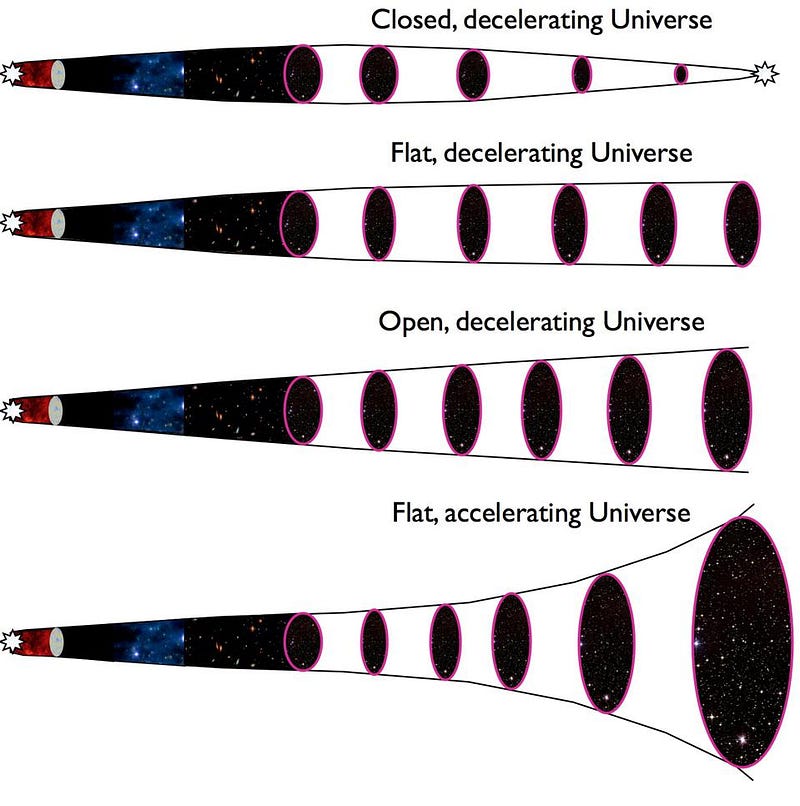
When we look back at a distant object in the Universe, we’re not seeing it exactly as it is today. We’re not even seeing it exactly as it was when the light was emitted from it, either. Instead, what we actually observe is a combination of two effects:
- the light emitted from the source, minus whatever light was absorbed between the source and our eyes,
- and how that light is shifted by all the sources of motion, mass, gravitation, and the expanding fabric of the Universe itself, as measured relatively between the source and the observer.
That second effect is tremendously informative, because it tells us that if we can understand how mass, gravitation, motion, and emission and absorption take place, we can use all of the leftover information to reconstruct how the Universe has expanded over its history. By measuring sources at different distances from us — and hence, with different light-travel times to our eyes — we can learn how the Universe has expanded over its history.

This is where that big surprise of dark energy came from: from the fact that, over the most recent 6 billion years, we’ve seen the Universe expand at a different rate than what the known forms of matter and radiation, even including dark matter, would indicate. It means that either:
- there’s an extra energy component to our Universe responsible for this, what we call dark energy,
- or the Universe obeys a different law of gravity than General Relativity on large scales and/or at late times, which only becomes apparent after the Universe has aged, expanded, and diluted past a certain critical point.
Either way, however, what we see occurring is the same. On small scales, gravitation can win many individual battles throughout the Universe, creating star clusters, individual galaxies, galaxy groups, and even large galaxy clusters, some of which merge together over time.
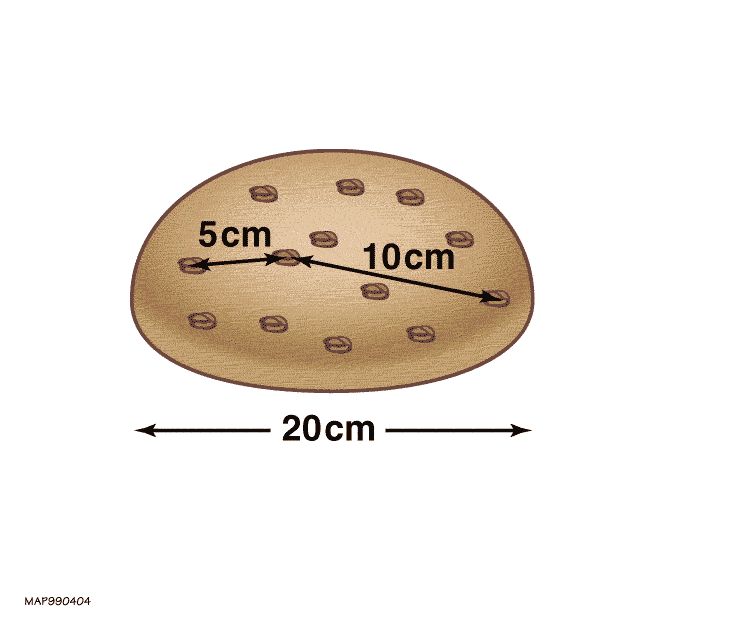
On larger scales, however, gravity always loses out. This extra component to the Universe — whether it’s a new force, a new source of energy, a new field, or a new understanding of gravity — determines the fate of the Universe on the greatest cosmic scales of all. Whatever was gravitationally bound by the time the Universe reached 7.8 billion years of age will remain bound for all of cosmic time. But whatever wasn’t yet bound together will never get there; these unbound structures will all expand away from one another, never to meet again.
You can visualize the Universe as a three-dimensional ball of bread dough with raisins distributed unevenly, even randomly, throughout it. The raisins each represent a bound individual structure: a galaxy, a group of galaxies, or even a massive galaxy cluster. The dough represents the fabric of space. As the dough expands in all three dimensions, the individual raisins all get farther apart. The farther apart two raisins initially are, the faster they’ll appear to move away from each other the more that time goes on.
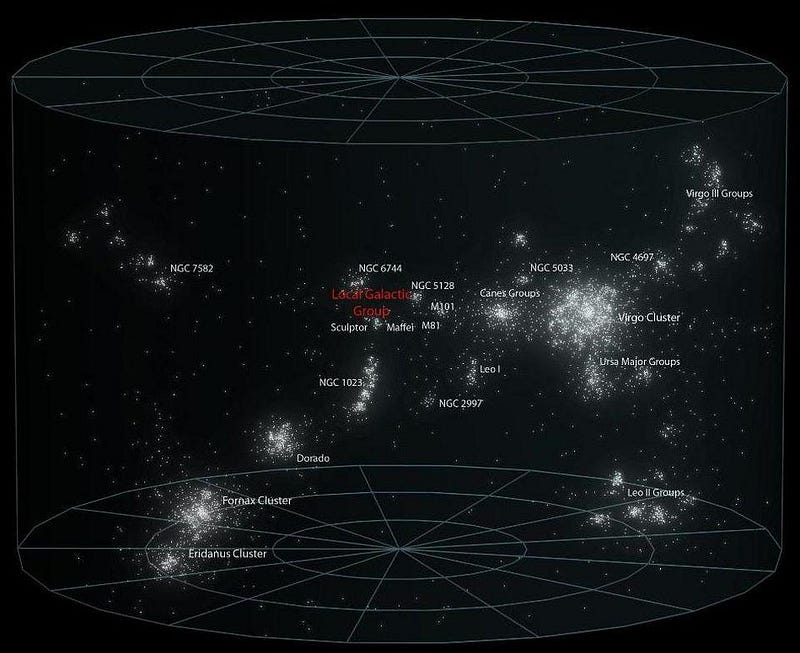
Because the Universe has dark energy in it, we know that every galaxy within our Local Group — including the Milky Way, Andromeda, the Triangulum Galaxy, both Magellanic Clouds, and perhaps ~60 other dwarf galaxies — is bound to us, meaning we behave as though we’re all part of the same “raisin” in the raisin bread.
But when we look out at any other “raisin” in the Universe, which can be any galaxy, galaxy group, or galaxy cluster beyond our own, here’s what we find instead.
- Right now, that “raisin” appears to be moving with the combined motion of its local motion through space, as pulled on from all of the gravitational sources in its vicinity, plus the effect of the overall expansion of the Universe.
- As time goes on and the “raisin” gets pushed to greater distances by the Universe’s expansion, it appears that its speed from us progressively increases over time.
- This increase is caused by the effects of dark energy, and — beyond a certain distance (18 billion light-years, at present) — makes all raisins forever unreachable by someone currently in our raisin.
Given that we can see for 46 billion light-years in all directions, that means that already, only 6 billion years into the era of dark energy dominance, 94% of the presently observable Universe is already permanently unreachable.
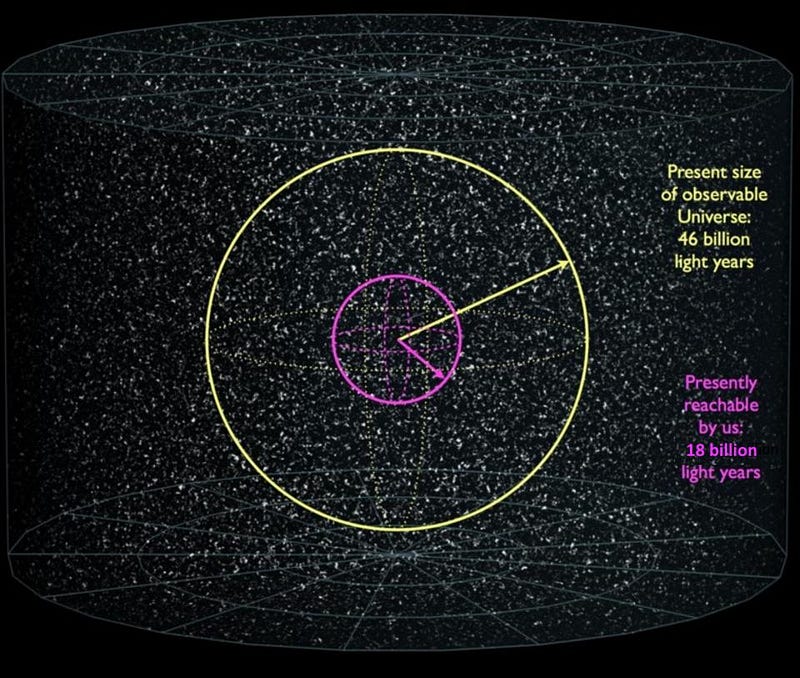
Or, at least, it’s unreachable if the following two things are true:
- We’re limited, in how fast we can travel through space, by the speed of light and the laws of Einstein’s relativity.
- That dark energy is, as the best data indicates, consistent with behaving as a cosmological constant: as a form of constant energy inherent to the fabric of space itself.
But either one of those assumptions can be wrong, and there are many different scenarios that can keep the rest of the Universe from speeding away until it’s forever beyond our reach. If we simply stayed put in our own Milky Way and waited for long enough, the night skies beyond our own Local Group (or whatever remains of it after all the galaxies have merged together) would be completely empty, with only the fading light from long-gone galaxies to keep us company. Here are the three most interesting ways we could possibly circumvent dark energy and visit the distant Universe for ourselves.

1.) Dark energy evolves over time. The best data we have, from the cosmic microwave background and the large-scale clustering of galaxies, points to dark energy being completely constant over time. But that isn’t necessarily the case, as many different “variable field” scenarios can lead to dark energy changing strength (or even sign) over time. If dark energy either becomes weaker or becomes negative, rather than positive, the expansion will slow down and possibly even reverse, making these galaxies reachable again.
Measuring the necessary galaxies to test for this is also one of the major science goals of the Nancy Roman Telescope, which NASA is slated to construct and launch as its next astrophysics flagship mission after James Webb. Right now, our best observations show that dark energy is consistent with a cosmological constant, but with an uncertainty of about 12% on that figure. Roman will give us a measure of dark energy that’s about 10 times more sensitive than our present data, teaching us if dark energy is different than our simple expectations by as little as 1%.
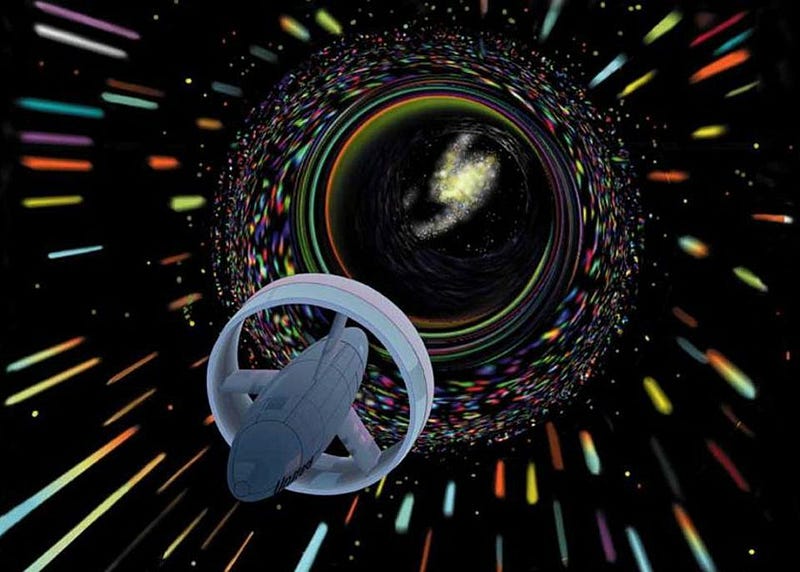
2.) Bending or folding space enables us to take a cosmic short-cut. Sick of being limited by the speed of light in your attempts to journey through the Universe? Aren’t we all. Well, the idea of Star Trek’s “Warp Drive” might still be science fiction, but there’s a real-life scientific possibility of making it a reality: the Alcubierre drive. In Einstein’s General Relativity, it’s possible to fold, bend, or otherwise distort the fabric of space, enabling a fantastic possibility: compressing the space in front of you at the expense of expanding the space behind you.
If we could make this a reality, we could theoretically compress the space ahead of us, travel through it at a slower-than-light speed, and then arrive at a destination appearing to have traveled faster than light could! The only downside is to make this theoretical possibility a reality, we’d need some form of negative energy or negative mass to exist. There’s an experiment happening at CERN right now to measure whether antimatter falls down or up in a gravitational field; if it falls up, the Alcubierre Drive might become a reality!
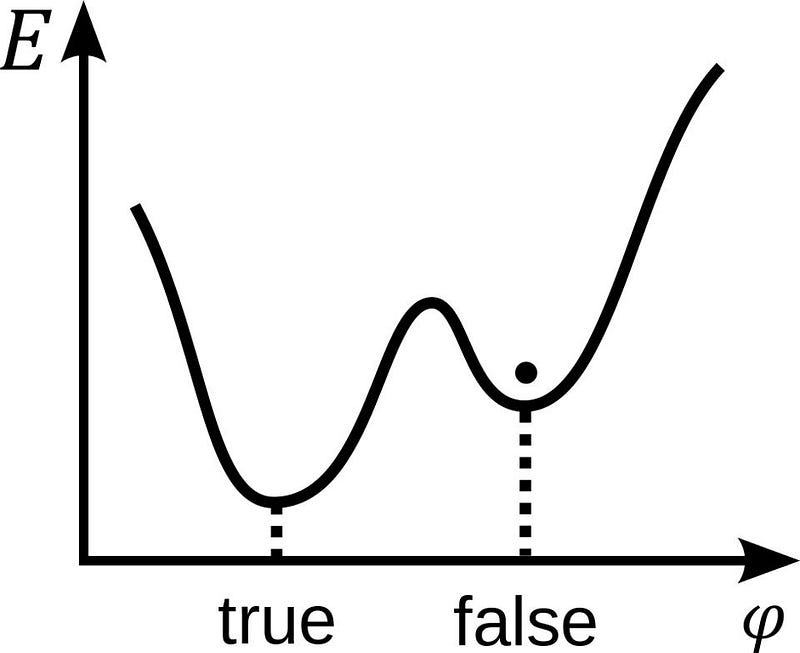
3.) Dark energy is bound to inevitably decay. Perhaps dark energy only appears to have a constant energy density for the time being, and that given enough time, it will decay in some fashion. While much has been made of vacuum decay — or the possibility that an immediate transition will knock the energy inherent to space down to a lower value, destroying the Universe as we know it instantly — there are other forms of decay that are gradual and non-lethal, such as a conversion of energy from one form into another.
It’s possible that this could simply result in the creation of a low density of particles: somewhere around one proton per cubic meter of space, at the cost of virtually eliminating dark energy. If this occurred, the expansion rate would change dramatically, as the Universe would immediately begin slowing down again. All of the distant galaxies, even the ones that appear unreachable today, would suddenly be within the reach of a relativistic spaceship. At close to the speed of light, we could potentially travel anywhere in the known Universe.
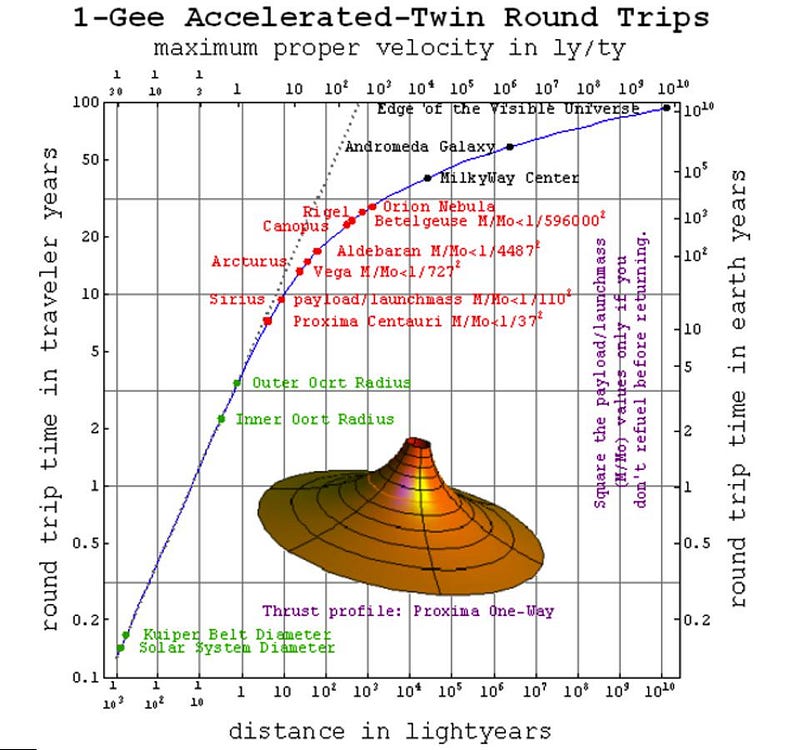
It’s always possible, and we must always keep this possibility in mind, that something is wrong with our current understanding. Perhaps our measurements are biased and have led us to an incorrect conclusion, but that would require an enormous number of independent lines of evidence all being biased in the same way. Perhaps we’ve got the laws of gravity wrong; perhaps we live in a very special and unusual region of the Universe that’s causing us to wrongly conclude that dark energy exists; perhaps there’s a novel force or interaction that exists that we simply haven’t properly identified.
In science, however, we base our conclusions on the full suite of data and evidence we have at our disposal, keeping in mind that they may change over time as we gain new and better information. The expansion rate is changing over time in a way that requires dark energy as the dominant component in our Universe, and dark energy is consistent with it being a cosmological constant: its energy density doesn’t appear to change with time. Unless dark energy reveals itself as something different or we find a short-cut through space, the majority of the observable Universe is forever beyond our reach already.
Ethan Siegel is the author of Beyond the Galaxy and Treknology. You can pre-order his third book, currently in development: the Encyclopaedia Cosmologica.





